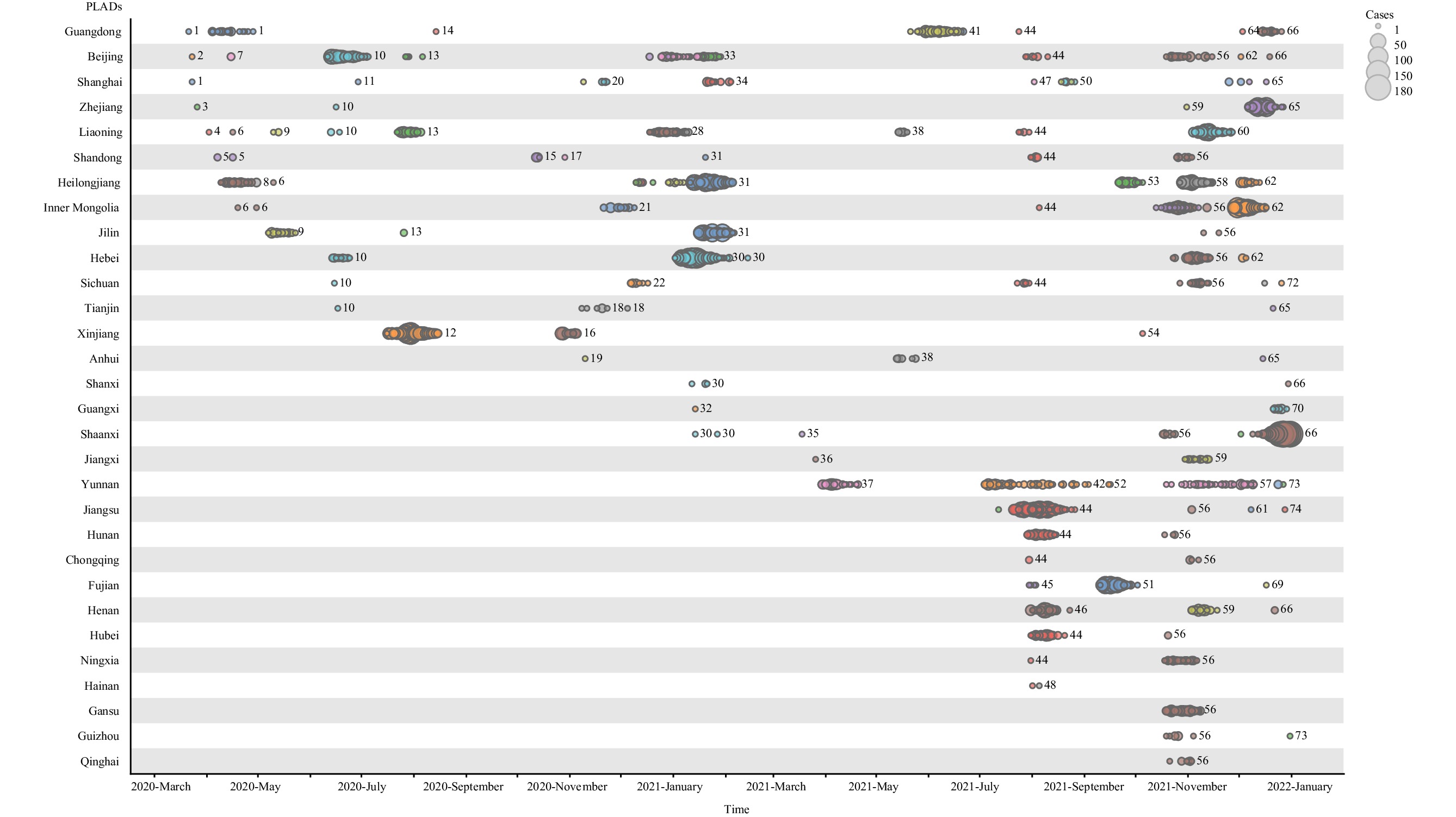2022 Vol. 4, No. 50
Environmental and occupational lead exposure has generally declined in the past two decades. However, there is no large-scale monitoring of blood lead levels (BLLs) in the Chinese general population.
This nationally representative study showed declines of BLLs in all ages of participants; for children aged 3–5 years, down from 78.1 μg/L to 16.9 μg/L, corresponding to 78.4% decrease in the past two decades (2000–2018).
Recommendations for elevated BLLs on screening children at high risk now need to be revisited and updated from 100 μg/L to 50 μg/L in guidelines to conform with the substantial declines in China.
The burden of illness and economic losses due to upper-limb work-related musculoskeletal disorders (UL-WMSDs) is high; thus, they have become a major global public health problem. At present, the epidemiological characteristics of UL-WMSDs in China's occupational population are still unknown.
The incidence of UL-WMSDs among key occupational groups in China is 22.5%, with distinct occupational characteristics.
This study has primarily determined the occurrence and potential risk factors of UL-WMSDs in key industries in China and provided data support for recommending prevention and control of the occurrence of such diseases in key industries in China, and in facilitating the addition into the China’s List of Legal Occupational Diseases.
After the initial coronavirus disease 2019 (COVID-19) outbreak in Wuhan, China, the outbreaks during the dynamic-zero policy period in the mainland of China have not been systematically documented.
We summarized the characteristics of 74 imported COVID-19 outbreaks between March 19, 2020 and December 31, 2021. All outbreaks of early severe acute respiratory syndrome coronavirus 2 (SARS-CoV-2) variants were successfully contained with the aid of nucleic acid testing, modern communication technologies, and non-pharmacological interventions.
These findings provide us with confidence for the containment of future emerging infectious diseases alike at early stages to prevent pandemics or to win time to gain experience, develop vaccines and drugs, vaccinate people, and wait for the possible lessening of the virus’ pathogenicity.
The severe acute respiratory syndrome coronavirus 2 (SARS-CoV-2) Omicron variant is the dominant circulating strain worldwide. To assess the importation of SARS-CoV-2 variants in the mainland of China during the Omicron epidemic, the genomic surveillance data of SARS-CoV-2 from imported coronavirus disease 2019 (COVID-19) cases in the mainland of China during the first half of 2022 were analyzed.
Sequences submitted from January to July 2022, with a collection date before June 30, 2022, were incorporated. The proportions of SARS-CoV-2 variants as well as the relationships between the origin and destination of each Omicron imported case were analyzed.
4,946 sequences of imported cases were submitted from 27 provincial-level administrative divisions (PLADs), and the median submission interval was within 1 month after collection. In 3,851 Omicron sequences with good quality, 1 recombinant (XU) and 4 subvariants under monitoring (BA.4, BA.5, BA.2.12.1, and BA.2.13) were recorded, and 3 of them (BA.4, BA.5, and BA.2.12.1) caused local transmissions in the mainland of China later than that recorded in the surveillance. Omicron subvariants dominated in the first half of 2022 and shifted from BA.1 to BA.2 then to BA.4 and BA.5. The percentage of BA.2 in the imported SARS-CoV-2 surveillance data was far higher than that in the Global Initiative on Sharing All Influenza Data (GISAID). The imported cases from Hong Kong Special Administrative Region, China, accounted for 32.30% of Omicron cases sampled, and 98.71% of them were BA.2.
The Omicron variant showed the intra-Omicron evolution in the first half of 2022, and all of the Omicron subvariants were introduced into the mainland of China multiple times from multiple different locations.



 Subscribe for E-mail Alerts
Subscribe for E-mail Alerts CCDC Weekly RSS Feed
CCDC Weekly RSS Feed

